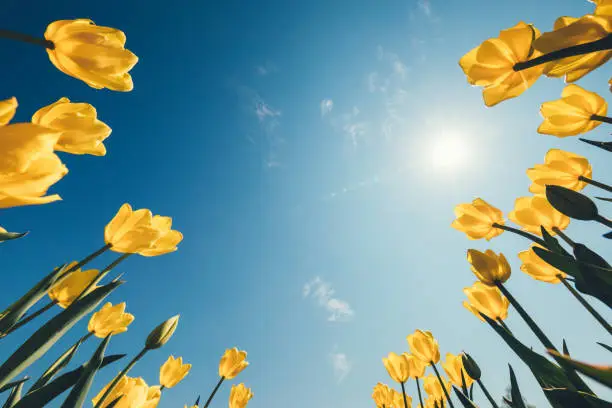Spring is a season of renewal, and Easter, often celebrated during this vibrant time of year, brings with it an abundance of colors, scents, and the joy of blooming flowers. For many, decorating with flowers is not only a tradition but also a way to symbolize the new life and resurrection associated with this holiday. In this comprehensive guide, we will explore the best flowers for Easter, tips for arranging them, and how to care for them to ensure lasting beauty throughout the season.
The Symbolism of Easter Flowers
Flowers have long been associated with Easter, each carrying its own symbolism. The lily, particularly the Easter lily (Lilium longiflorum), is perhaps the most iconic of all Easter flowers. It symbolizes purity and resurrection, making it a fitting choice for this holiday. Its trumpet shape is often seen as a call to celebrate new life. Other flowers, such as daffodils, tulips, and hyacinths, contribute to the festive atmosphere with their vibrant colors and sweet fragrances, representing renewal, hope, and joy.
Popular Easter Flowers
- Easter Lily: As mentioned, the Easter lily is a classic choice for Easter celebrations. Its white petals represent purity and virtue. These flowers thrive indoors and outdoors, making them versatile for any setting.
- Daffodils: Bright and cheerful, daffodils are synonymous with spring. Their sunny yellow blooms are a symbol of rebirth and new beginnings, bringing warmth to any arrangement.
- Tulips: Available in a multitude of colors, tulips symbolize love and passion. They are perfect for creating vibrant bouquets and can be easily incorporated into various floral arrangements.
- Hyacinths: Known for their strong fragrance, hyacinths come in shades of blue, pink, purple, and white. These flowers symbolize sincerity and playfulness, making them an excellent addition to Easter decorations.
- Crocuses: These hardy flowers often bloom first in spring, signifying the end of winter. Their delicate appearance and vibrant hues make them a lovely addition to any garden or floral arrangement during Easter.
- Cherry Blossoms: While not traditional Easter flowers, cherry blossoms bloom during this time and add a touch of elegance. Their fleeting beauty can symbolize the transient nature of life, fitting seamlessly into the themes of renewal present during Easter.
Tips for Arranging Easter Flowers
Creating beautiful floral arrangements for Easter can be a rewarding experience. Here are some tips to help you master the art of floral design:
- Choose a Color Palette: Start by selecting a color scheme that resonates with Easter. Pastels such as soft pinks, blues, and yellows evoke a gentle, spring-like feel, while vibrant colors can add energy and excitement.
- Mix Flower Types: Create depth and texture by mixing different flowers. Combine larger blooms like lilies with smaller blooms like daisies or filler flowers like baby’s breath to create a well-rounded arrangement.
- Layering: Use a varying height arrangement by placing taller flowers at the back and shorter ones in the front. This layering effect enables each flower’s beauty to shine through.
- Use Seasonal Foliage: Incorporate greenery, such as ferns, eucalyptus, or even herbs like rosemary or thyme, to add a fresh look to your arrangement. Greenery not only complements the flowers but also enhances their longevity.
- Vessels and Containers: Choose vessels that match the mood of your arrangement. Rustic pots, elegant vases, or even a simple mason jar can transform your flowers into a stunning centerpiece.
- Accessorize: Enhance your arrangements with Easter-themed accessories like decorative eggs, bunny figurines, or ribbons. These little touches can bring a playful spirit to your decor.
Caring for Easter Flowers
To ensure your Easter flowers stay fresh and beautiful for as long as possible, proper care is essential. Here are some tips:
- Trim Stems: Before arranging your flowers, trim the stems at an angle to help them absorb water more efficiently. Remove any leaves that will sit below the water line to prevent rot.
- Use Clean Water: Fill vases or containers with clean, lukewarm water. Consider adding flower food if provided, as this can nourish your flowers and extend their lifespan.
- Rearrange and Refresh: Change the water every couple of days and trim the stems again to maintain freshness. This will help prevent bacterial growth that shortens the life of your flowers.
- Keep Cool: Display your arrangements away from direct sunlight and heat sources, as these can cause flowers to wilt faster. A cool, shaded area will help them thrive longer.
- Remove Dead Blooms: Regularly check for and remove any wilting or dead flowers from your arrangements to keep them looking fresh and vibrant.
Incorporating Easter Flowers in Your Celebrations
Easter flowers can be used in a variety of ways during the holiday season. Consider these ideas for incorporating them into your celebrations:
- Centerpieces: Create magnificent centerpieces for your Easter dinner table that will be a conversation starter.
- Wreaths: Make a floral wreath adorned with Easter flowers to hang on your front door, welcoming guests with a burst of color and scent.
- Bouquets: Prepare small bouquets for each guest as a charming takeaway gift, ensuring your guests leave with a piece of your floral decor.
- Religious Celebrations: For church decorations or religious services, arrangements of lilies and other blooms can enhance the sacred space.
Final Thoughts
Mastering Easter flowers offers a wonderful opportunity to embrace the beauty and symbolism of spring while adding vibrancy to your home and celebrations. By understanding the significance of different flowers, perfecting your arrangement techniques, and providing them with the care they require, you can create breathtaking displays that illuminate the joy and renewal that Easter represents. Whether you’re decorating your home or hosting a gathering, let the beauty of Easter flowers inspire and elevate your celebrations this season. Happy arranging!

